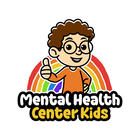|
Key Takeaways:
- Rainbow breathing combines deep breathing and visualizing the colors of the rainbow to help children relax.
- The benefits of rainbow breathing include better focus, enhanced emotional regulation, and higher self-awareness.
- Parents can use visual cues like rainbow breathing posters to help children grasp the concept fully.
|
Is your child feeling anxious or panicky after a stressful test or worried about heading off to summer camp? Rainbow breathing for kids can help calm any child down and put them in a calmer, more productive headspace.
Learn how rainbow breathing for kids works, how it can benefit your child, and how to guide them through the process.
What is Rainbow Breathing?
Rainbow breathing is a calming strategy and breathing exercise for kids that incorporates the colors of the rainbow to guide children through the process. It combines belly breathing, visual imagery, and sensory engagement, as children can associate each color with a specific feeling.
The technique is based on the concept of chakras, energy centers within the body. There are seven chakras, each represented by a color of the rainbow:
-
Red: Stability
-
Orange: Relationship and creativity
-
Yellow: Self-esteem
-
Green: Love and compassion
-
Blue: Communication
-
Indigo: Divine vision
-
Purple: Spiritual connection
For children, a simplified version of rainbow breathing might look like tracing a rainbow shape with their arms as they take deep breaths. It’s similar to box breathing with the added component of using colors to guide kids through the process.
When to Use Rainbow Breathing
Rainbow breathing offers a simple and accessible way to help children calm down in stressful situations. Here are the best opportunities to use them.
When feeling stressed or anxious
Children may feel stressed or anxious after challenging activities like tests or in intense situations like doctor visits. Research has shown that guided rainbow breathing for just a minute or two can quickly reduce stress levels [*].
Before or during challenging situations
Some children experience anxiety before and after challenging situations, like a sports tournament or a school performance. Performing a few rainbow breaths before and after a difficult situation can make children feel prepared and satisfied with their performance.
During conflicts
Rainbow breaths are excellent for diffusing intense emotions during conflicts. When children feel anxious or overwhelmed, they can use rainbow breaths to calm their thoughts and return to a more grounded state. Through deep breathing, children can put themselves in a better position to reason and respond kindly.
When you need to slow down and relax
It’s not uncommon for children to bounce off the walls, especially when overly excited. Parents or teachers can use rainbow breathing to help them refocus or calm their energy and give them a “brain break.” Children can also use rainbow breathing to start and end the day to establish a calming routine.
Benefits of Rainbow Breathing for Kids
Rainbow breathing provides dozens of benefits for children of all ages. Here are a few reasons you should start incorporating rainbow breathing into your child’s routine:
-
Enhanced emotional regulation: Combining breath focus and color imagery is an excellent way to help children manage big feelings. It taps into multiple senses and gives them a concrete task to enhance their focus. Over time, repeated rainbow breathing can build a child’s self-control and encourage them to take a step back and breathe rather than giving in to impulsive thoughts.
-
Higher self-awareness: Part of performing rainbow breathing is encouraging children to notice and observe how their body reacts. When they practice this type of mindfulness, they tune in to the present moment and learn to become more aware of their feelings. Studies have shown that mindful breathing can improve executive functioning in children and help them recognize when they need a break [*].
-
Improved focus: Deep and mindful breathing exercises can sharpen a child’s focus and improve their ability to pay attention. Studies have shown that children who practice deep breathing have improved academic performance, as they can settle their minds and focus on their tasks [*].
-
Enjoyable and engaging calming method: Some children struggle to calm down because they are bubbling with energy. Rainbow breathing provides an engaging and appealing way to get children to focus, versus simply instructing them to “just relax.”
How to Do Rainbow Breathing
Rainbow breathing is simple. Here are instructions you can use with your child:
-
Get comfortable: Find a quiet spot in your child’s room or home. Ensure the environment is free of distractions. Have them stand or sit up straight with their arms relaxed.
-
Inhale and reach up: Have your child breathe in slowly through the nose while raising their arms upward in an arc. Ask them to imagine painting a rainbow in the sky as they breathe in a bright color like red or orange.
-
Exhale and release: Breathe out gently through the mouth as your child lowers their arms back down.
-
Repeat with each color: Repeat and continue the cycle with each color of the rainbow. Assigning each breath a color can give your child concrete focus. For example, they might associate red with releasing frustration and blue with releasing sadness.
Remember, children learn best through imitation. If you’re teaching a child to do rainbow breaths for the first time, model and guide them through the process. Describe what you’re doing through each step.
Rainbow Breathing Printables
Some children are visual learners, and including rainbow breathing printables in their routine can make the activity more effective.
Our simple rainbow breathing poster features visual, colorful cues for when to breathe in and breathe out. It’s perfect for hanging up in classrooms or at home.

You can also use our rainbow grounding technique poster, which encourages children to identify objects in their environment that correspond with each color of the rainbow. It’s an excellent activity to pair with deep breaths, as it helps children refocus their energy and shift their attention away from anxiety.

The Bottom Line
As children encounter new experiences in school and at home, it’s normal for them to feel stressed and anxious. Practicing rainbow breathing can go a long way in calming their minds.
Explore our anxiety worksheets and stress management worksheets to help your children find the best coping mechanisms.
Sources:
- Jelena Obradović, Sulik MJ, Armstrong‐Carter E. “Taking a few deep breaths significantly reduces children’s physiological arousal in everyday settings: Results of a preregistered video intervention.” Developmental Psychobiology, 2021.
- Bockmann JO, Yu SY. “Using Mindfulness-Based Interventions to Support Self-regulation in Young Children: A Review of the Literature.” Early Childhood Education Journal, 2022.
- Voltmer K, Finja Hondrich, Salisch M von. “Daily breath-based mindfulness exercises in a randomized controlled trial improve primary school children’s performance in arithmetic.” Scientific Reports, 2023.























































